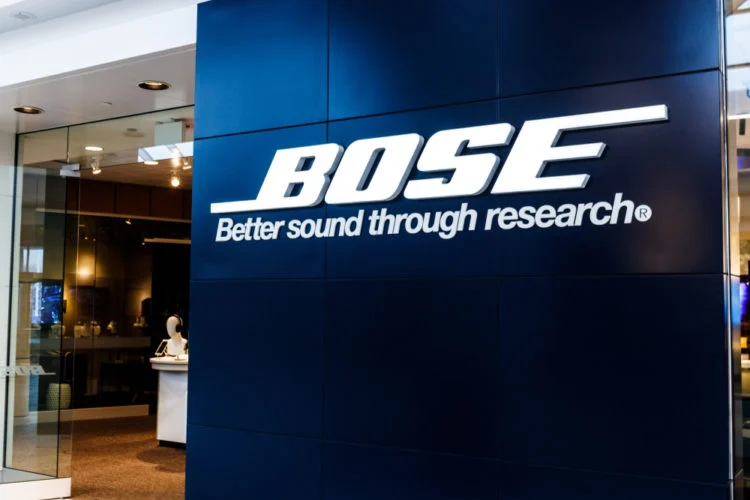In the heart of Framingham, Massachusetts, the story of sonic innovation and audio excellence unfolds with the name Bose Corporation. Established in 1964 by the visionary Amar Bose, this American manufacturing powerhouse has since become a global icon in the realm of audio equipment. With an unwavering commitment to delivering pristine sound experiences, Bose has transcended boundaries and redefined the auditory landscape.
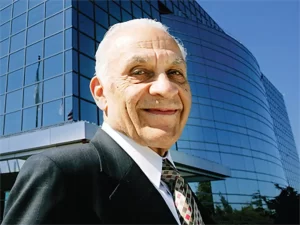
At its core, Bose is celebrated for crafting cutting-edge home audio systems and speakers that elevate the way we perceive sound. Beyond that, it has left a mark in the world of technology with its groundbreaking noise-cancelling headphones, professional-grade audio products, and automotive sound systems. These creations have not only delighted audiophiles but have also earned Bose a sterling reputation for setting industry standards in innovation and quality.
What distinguishes Bose is not just its extraordinary product portfolio but its enduring dedication to preserving the art of sound. With over 10,000 talented individuals driving its vision worldwide, the company has amassed an annual sales revenue that exceeds a remarkable $3 billion. Bose’s resonance can be felt in more than 150 countries, where its products are cherished for their remarkable sound quality and innovative design. It is a testament to the global reach of a brand that has always sought to make the joy of high-quality sound universally accessible.
Delving into the roots of Bose Corporation unveils the passion and ingenuity of its founder, Amar Bose. Fuelled by his profound love for music, he embarked on a journey to redefine the auditory landscape. In 1964, he founded Bose Corporation with a groundbreaking speaker design that utilized multiple speakers to create an immersive soundstage by reflecting sound off walls. This revolutionary approach birthed the Bose 2201, heralded as a critical and commercial triumph, setting the stage for a legacy of pioneering audio solutions.
Bose’s legacy continued to evolve with the introduction of the Bose 901 Direct/Reflecting speaker, which became the company’s flagship product for decades. In the 1980s, the company ventured into new territories, expanding its product line to include noise-cancelling headphones and automotive sound systems. Bose revolutionized the headphone industry with its pioneering noise-cancelling technology, firmly establishing itself as the market leader in this category. Simultaneously, its automotive sound systems garnered acclaim and trust, with Bose being the preferred choice of numerous major automakers.
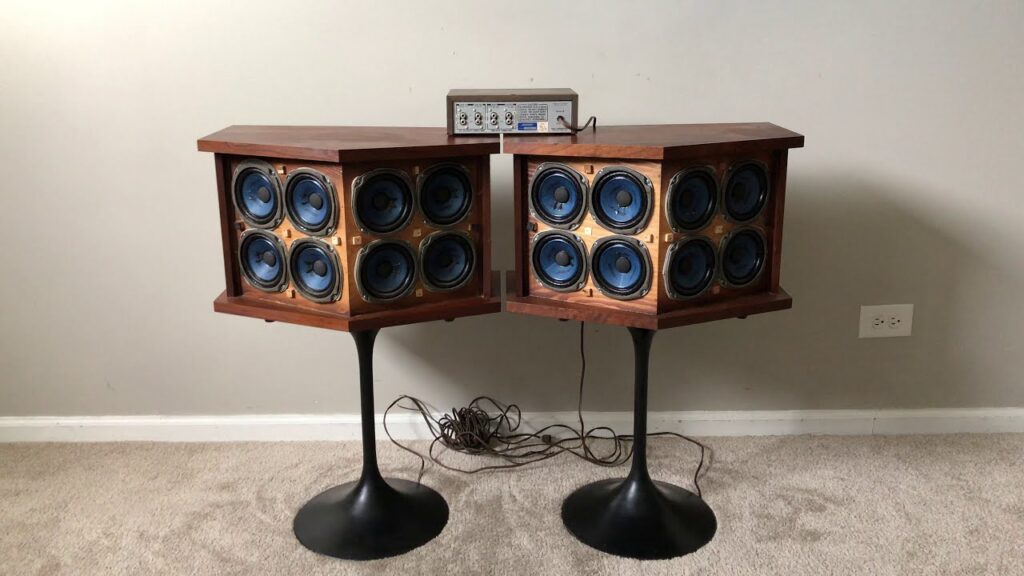
Today, Bose stands tall as one of the world’s foremost audio companies, celebrated for its unwavering commitment to superior sound quality, avant-garde design, and product durability. However, it’s not just about the products; Bose has consistently set benchmarks in customer service, ensuring that the harmonious relationship between technology and humanity remains a cornerstone of its legacy. Welcome to the world of Bose Corporation, where innovation harmonizes with sound to create an unparalleled auditory experience for all.
Marketing Strategies of Bose Corporation
Bose Corporation, known for its innovative audio products, has employed a range of marketing strategies over the years to establish and maintain its strong brand presence and market leadership. Let’s delve into the key marketing strategies of Bose Corporation in detail:
1. Product Innovation and Quality Assurance
As a marketing strategy for product innovation and quality assurance, Bose has consistently focused on developing cutting-edge technology that sets them apart from competitors. They have invested heavily in research and development to create products that offer superior sound quality, comfort, and convenience. This approach has allowed them to establish themselves as a premium brand known for their high-quality audio equipment.
One example of this focus on innovation can be seen in their noise-cancelling headphones. These headphones use advanced algorithms to analyze incoming sounds and cancel out unwanted noises such as airplane engine roar or city traffic. By offering a unique solution to a common problem faced by travelers and commuters, Bose was able to differentiate itself from other brands and build a loyal customer base.
In addition to innovative features, Bose places great emphasis on ensuring the highest level of quality control throughout the manufacturing process. Each product undergoes rigorous testing before it leaves the factory floor, and any units that fail to meet strict standards are rejected. This attention to detail helps ensure that customers receive products that not only look good but also perform well over time.
To further reinforce their commitment to quality, Bose offers a comprehensive warranty program that covers all of their products. Customers who experience issues with their purchases can easily contact the company’s support team for assistance, which helps foster trust and confidence in the brand.
Overall, Bose’s focus on product innovation and quality assurance has been instrumental in building their reputation as a leader in the audio industry. Their dedication to providing top-notch products and services has helped attract and retain customers who value exceptional performance and reliability.
2. Customer-Centric Approach
Bose has always been known for their high quality audio products such as headphones, speakers, and sound systems. However, they realized that simply having great products wasn’t enough to stand out from competitors like Apple, Samsung, and Sony. So, they decided to adopt a customer-centric approach to differentiate themselves and build stronger relationships with customers. Here are some ways Bose implements this approach:
Understanding customer needs: Bose conducts extensive research to understand their target audience’s preferences, pain points, and behaviors. They use surveys, focus groups, social media monitoring, and other methods to gather insights into what customers want and need from an audio product. This helps them design products that meet those specific requirements.
Personalized experiences: Once Bose knows who their customers are and what they want, they tailor their marketing efforts to create personalized experiences. For example, if someone frequently listens to music while working out, Bose might send them emails highlighting their sports headphones line. Or, if someone prefers listening to podcasts, Bose could recommend their noise-cancelling earbuds. By providing relevant content, Bose increases engagement and builds trust with customers.
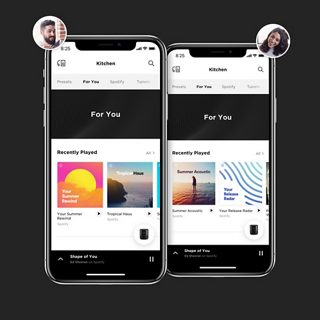
Exceptional customer service: Bose believes that exceptional customer service is crucial to building long-term relationships with customers. Their team members receive comprehensive training to ensure they can handle any issue that arises, whether it’s related to product performance or shipping delays. Customers can reach out via phone, email, chat, or social media, and expect prompt responses and solutions to their problems.
Community building: Finally, Bose fosters a sense of community among its customers by creating online platforms where they can connect, share tips, and discuss their passion for music and audio technology. For instance, Bose SoundLink is a forum where users can ask questions, share feedback, and showcase their creative projects using Bose products. By facilitating these interactions, Bose strengthens brand affinity and encourages word-of-mouth marketing.
In summary, Bose’s customer-centric approach involves understanding customer needs, offering personalized experiences, delivering exceptional customer service, implementing loyalty programs, and building communities around shared interests. By prioritizing customer satisfaction at every stage of the buyer journey, Bose sets itself apart from competitors and cultivates lasting relationships with its customers.
3. Retail and Distribution Strategy
Bose strategically places its products in various distribution channels, including flagship stores, authorized dealers, online platforms, and partnerships with major retailers.
Retail Strategy:
Exclusive Branded Stores: One of Bose’s key strategies is maintaining control over the shopping experience by operating their own stores. As of 2021, there were approximately 190 Bose stores worldwide, including locations in North America, Europe, Asia, and Australia. These stores serve as flagship destinations for customers to interact with Bose products firsthand, receive expert advice, and benefit from knowledgeable staff trained specifically on Bose technologies.
Omnichannel Presence: In addition to physical stores, Bose leverages omnichannel retailing through e-commerce websites and mobile apps. Consumers can browse, purchase, and track orders across multiple touchpoints seamlessly. This allows Bose to capture potential buyers regardless of location or preferred shopping method.
Limited Distribution Network: Unlike many consumer electronics brands, Bose intentionally limits the number of authorized resellers carrying their products. This selectivity ensures better control over pricing, promotions, and the overall brand image. By reducing availability through unauthorized channels, Bose mitigates price erosion and protects its premium positioning.
Distribution Strategy:
Direct-to-Consumer Model: Bose primarily distributes its products directly to consumers through their owned retail channels (stores and digital platforms). This direct-to-consumer model enables Bose to maintain tight control over the customer experience, minimize intermediary costs, and maximize profit margins.
Selective Partnerships: While Bose predominantly relies on its direct-to-consumer model, the company occasionally partners with carefully chosen third parties to expand distribution opportunities. For example, Bose collaborated with luxury home furnishings brand Bang & Olufsen to offer custom installation services for Bose smart home devices within selected Bang & Olufsen stores. Such partnerships allow Bose to tap into complementary markets without sacrificing exclusivity or diluting their brand identity.
International Expansion: Bose has consistently pursued international growth opportunities, particularly in emerging markets like China and India. The company adapts its distribution strategy based on local regulations, cultural differences, and logistical challenges. For instance, Bose established joint ventures with domestic partners in some Asian countries to navigate complex regulatory environments more effectively.
Overall, Bose’s retail and distribution strategy emphasizes quality over quantity. By focusing on controlled expansion, direct-to-consumer models, limited distribution networks, and selective partnerships, Bose preserves its premium brand reputation and maximizes profits.
4. Brand Building and Positioning
Bose has built a strong brand image by consistently associating itself with high-quality audio experiences. The brand positioning revolves around innovation, quality, and reliability.
Brand Identity: At the core of Bose’s marketing efforts lies a strong brand identity. The company positions itself as an innovator in sound technology, constantly pushing boundaries to improve listening experiences. Its brand values include excellence, innovation, simplicity, and elegance. Bose communicates this identity through consistent messaging, visual elements, and product design.
Target Audience: Bose targets audiophiles who value high-quality sound and appreciate cutting-edge technology. They aim to attract both casual listeners and professional musicians seeking superior audio equipment for recording and live performances. By catering to diverse segments within the audio industry, Bose broadens its appeal while maintaining its focus on sonic excellence.
Product Differentiation: Bose distinguishes itself from competitors by developing proprietary technologies and patented designs. For instance, the company pioneered noise reduction headphones with its iconic QuietComfort series, which became synonymous with travel comfort and immersive entertainment. Other notable innovations include the active equalization feature found in many Bose speakers and headphones, providing optimized sound tailored to individual preferences.
Advertising Campaigns: Bose frequently launches impactful advertising campaigns to reinforce its brand message and promote new products. Some memorable examples include the “Better Sound Through Research” commercials featuring scientists working tirelessly to perfect audio reproduction. Another successful ad campaign featured famous musicians such as Taylor Swift and DJ Khaled praising Bose products for enhancing their musical experiences.
5. Partnerships and Collaborations
artnerships and collaborations are an essential aspect of Bose’s marketing strategy. By forming alliances with complementary brands, organizations, and individuals, Bose expands its reach, gains exposure to new markets, and reinforces its position as a premium audio equipment manufacturer. Let me elaborate on this point further:
Co-branding Opportunities: Bose has formed several co-branding partnerships with other companies that complement its offerings or target similar audiences. One prominent collaboration was with Starwood Hotels & Resorts Worldwide, where guests could enjoy Bose QuietComfort noise-canceling headphones during their stays. This arrangement allowed Bose to reach potential customers in a unique setting and increase brand exposure.
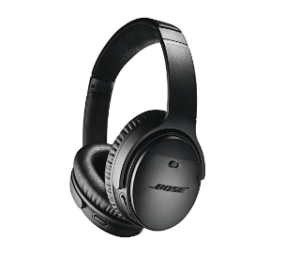
Artist Relationships: Bose has established close connections with popular musicians, athletes, filmmakers, and other creatives. These individuals often use Bose products in their work or personal lives, endorsing the brand publicly. By aligning themselves with influential figures in different industries, Bose can tap into broader fanbases and gain credibility among niche communities.
Technology Integrations: To remain competitive in today’s tech landscape, Bose has pursued partnerships with leading digital players like Amazon Alexa, Google Assistant, Apple AirPlay 2, and Sonos. By integrating Bose products with these smart home systems, users benefit from seamless voice control and multiroom functionality across multiple brands. Such collaborations help expand Bose’s reach beyond traditional retail channels and attract tech-savvy consumers looking for convenient solutions.
Academic Alliances: Bose recognizes the importance of scientific research and education in shaping the future of audio technology. Therefore, the company has developed academic partnerships with institutions like MIT, Carnegie Mellon University, and Virginia Tech. These collaborations involve joint projects, student internships, and knowledge sharing, allowing Bose to leverage expertise outside its own walls and potentially discover groundbreaking ideas.
Sports Sponsorships: Bose sponsors numerous professional sports teams, athletes, and sporting events, such as the NFL, NBA, MLB, PGA Tour, IndyCar Series, and Formula One racing. By associating itself with elite athletes and major sporting leagues, Bose aligns its brand with excellence, performance, and competition. These partnerships also give Bose the opportunity to showcase its noise-cancelling headphones and portable speakers at live events and in broadcast coverage.
In summary, Bose Corporation’s marketing strategies revolve around continuous innovation, a customer-centric approach, strong branding, and a diversified approach to distribution and engagement. By focusing on these core strategies, Bose has maintained its position as a leader in the audio industry and continues to meet the evolving needs of its customers.
Marketing Mix of Bose Corporation
Bose Corporation, renowned for its high-quality audio products, implements the traditional marketing mix, often referred to as the 4Ps (Product, Price, Place, and Promotion), to effectively market its offerings. Let’s explore each component of Bose’s marketing mix in detail:
Product
Product refers to the tangible goods or intangible services that a business offers to satisfy consumer needs or wants. Bose is known for producing high-quality audio equipment designed to deliver exceptional listening experiences. Here are some key aspects of Bose’s product strategy:
Diverse product lines: Bose offers a broad range of audio solutions tailored to specific use cases, lifestyles, and budgets. From QuietComfort noise-cancelling headphones for travelers to smart speaker systems for homes, Bose addresses various customer segments with unique features and designs. This diversity allows the company to cater to varying customer needs and interests.
Superior technology and engineering: Bose invests heavily in research and development to continually improve its audio technology. Many of its products incorporate proprietary algorithms, materials, and components that set them apart from competitors. For example, the company’s active equalization system adjusts sound output based on factors like room acoustics and listener position.
Premium design and craftsmanship: Bose pays close attention to the look and feel of its products, creating sleek, modern designs that appeal to style-conscious buyers. Material choices, color schemes, and finishes all contribute to a cohesive visual identity that reflects the brand’s commitment to elegance and refinement.
Intuitive usability: Bose strives to simplify complex functions and streamline user interfaces, making it easy for people to enjoy their devices without fuss or confusion. Voice control compatibility with virtual assistants like Alexa and Google Assistant adds another layer of convenience for users accustomed to hands-free operation.
Consistent brand image: Across all product categories, Bose maintains a consistent brand image characterized by minimalist styling, understated luxury, and cutting-edge technology. This unified approach helps reinforce the brand’s values and differentiation, which contributes to strong brand recognition and loyalty among customers. The consistency in branding also enables cross-promotion opportunities between product lines, encouraging existing customers to explore additional offerings within the Bose family.
Pricing
The pricing component involves determining how much customers should pay for your product or service. Bose employs several tactics to optimize its pricing strategy:
Value-based pricing: Bose positions its products as premium items, emphasizing the quality of its audio technology and overall listening experience rather than just the cost. The company often highlights the benefits of advanced features such as noise cancellation, wireless connectivity, and voice assistance integration when communicating pricing. By focusing on perceived value, Bose creates a sense of exclusivity around its products, allowing it to charge higher prices without alienating potential customers who appreciate the added worth.
Subscription models: Recently, Bose introduced a subscription program called “Bose Music,” which provides ad-free streaming access to millions of songs along with exclusive artist content. Offering this service as a monthly fee allows Bose to generate recurring revenue streams beyond traditional hardware sales while providing an innovative solution for music lovers seeking more immersive listening experiences. This flexible payment model caters to changing consumer preferences and expands the brand’s reach across different demographics.
Place
Place refers to the distribution channels used to make a product available to consumers. In today’s omnichannel retail environment, companies must carefully consider where they sell their goods to ensure maximum exposure and convenience for customers. Here’s what Bose does to optimize its place strategy:
Direct-to-consumer sales: Bose operates numerous physical stores worldwide, enabling direct interaction with customers and showcasing its latest technologies. Visiting these locations gives individuals the opportunity to test out products before purchase, receive expert advice, and benefit from knowledgeable support staff. Additionally, Bose has an extensive online storefront, allowing customers to browse, compare, and order products directly from the comfort of their own homes.
Third-party partnerships: Beyond its owned properties, Bose collaborates with major electronics retailers, department stores, and specialty audio dealers to distribute its products globally. Partnering with well-established brands not only increases visibility but also leverages preexisting relationships with customers who might be interested in Bose’s offerings.
Selective distribution: Bose exercises careful consideration over which retailers carry its products. By choosing strategic partners that share similar target audiences and complementary product lines, the company ensures its merchandise reaches relevant customers through trusted channels. This selective approach strengthens the brand’s reputation and preserves its premium status.
Exclusive releases: Occasionally, Bose will launch limited edition or prototype versions of its products solely at its flagship stores or via its website. Creating scarcity and exclusivity generates excitement among devoted fans and drives traffic to both physical and digital locations. Such initiatives help build brand loyalty and create word-of-mouth buzz around new product introductions.
Promotion
Promotion refers to the various communication methods employed by businesses to inform, educate, persuade, and remind people about their products or services. Bose utilizes multiple platforms and techniques to promote its brand and engage with customers effectively. Here are some key elements of Bose’s promotion strategy:
Emphasis on experiential marketing: Bose understands that hearing is believing, so it frequently hosts interactive events and exhibitions to demonstrate the superior sound quality of its products. From concerts and live performances to virtual reality installations and pop-up stores, Bose offers hands-on encounters that immerse participants in exceptional audio environments. These memorable experiences not only attract attention but also inspire positive word-of-mouth recommendations.
Targeted advertising campaigns: Bose tailors its advertising efforts based on specific customer segments, using insights gleaned from research and data analysis. For example, the company might focus on sports enthusiasts with its QuietComfort 35 II headphones, highlighting their active noise cancelation capabilities during workouts or commutes. Similarly, Bose could aim its high-end home speaker systems at audiophiles or luxury homeowners looking for unparalleled acoustic precision.
Content creation and influencer partnerships: Bose produces engaging multimedia content, including videos, blog posts, social media updates, and podcasts, to showcase its products and thought leadership. Collaborating with popular personalities in fields like music, entertainment, and tech helps amplify these messages further. By partnering with influential voices, Bose can tap into established communities of interest and expand its audience reach.
Sponsorships and event sponsorship: Bose supports cultural, sporting, and charitable endeavors that align with its values and cater to its target markets. By associating itself with prestigious organizations, festivals, or athletes, Bose positions itself as a premium brand committed to excellence and community involvement. Event sponsorship opportunities allow Bose to showcase its products in real-world scenarios, demonstrating their performance under diverse conditions.
In conclusion, Bose Corporation’s marketing mix revolves around offering premium, innovative audio products while justifying their premium pricing through superior quality and value. The company ensures accessibility through diverse distribution channels, engages customers through comprehensive advertising and content marketing, and maintains a strong brand presence through strategic sponsorships and partnerships. This holistic approach has contributed to Bose’s enduring success in the audio industry.
Also Read: Dissecting BMW’s Marketing Strategies & Success Factors
To read more content like this, subscribe to our newsletter
